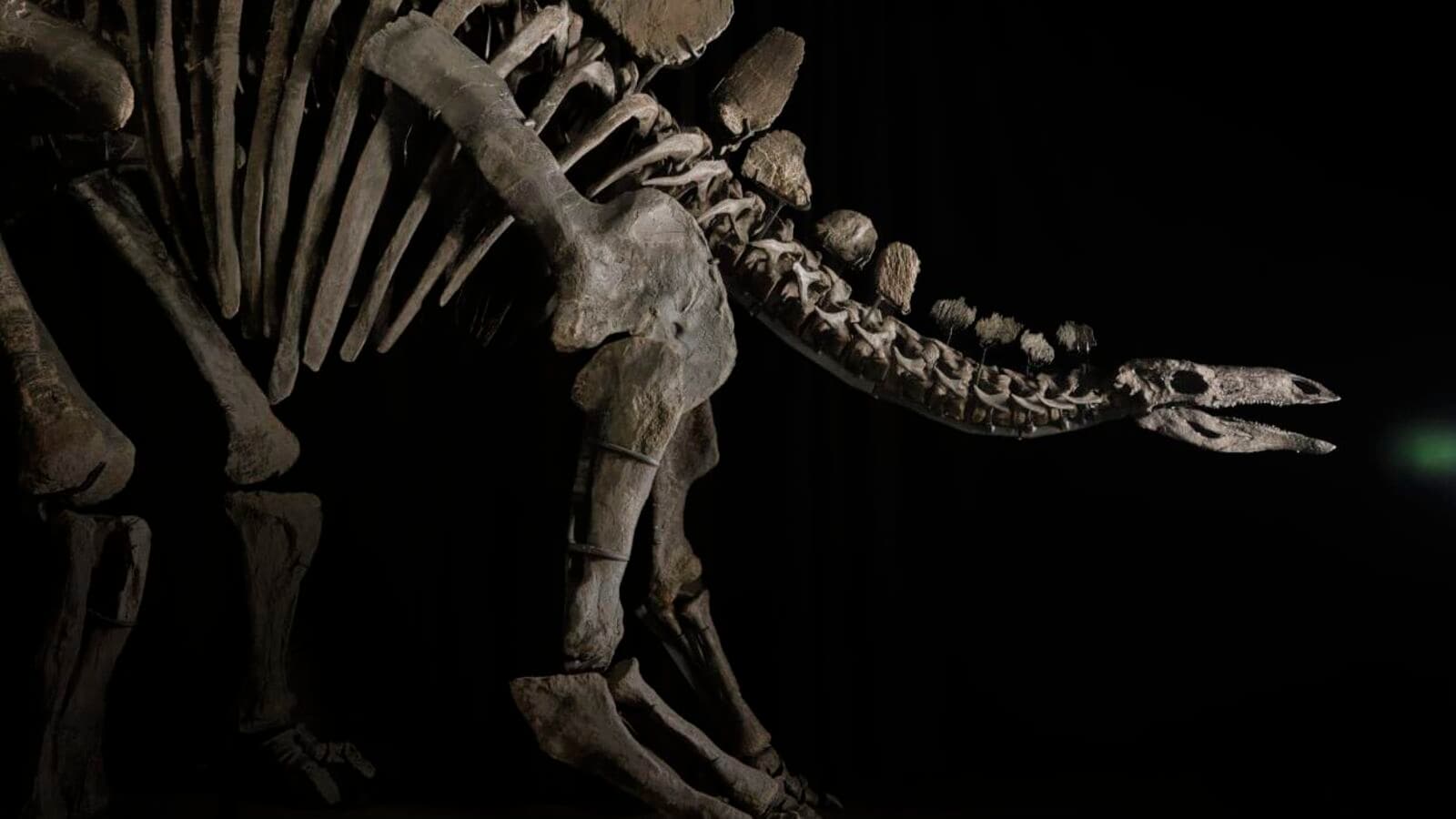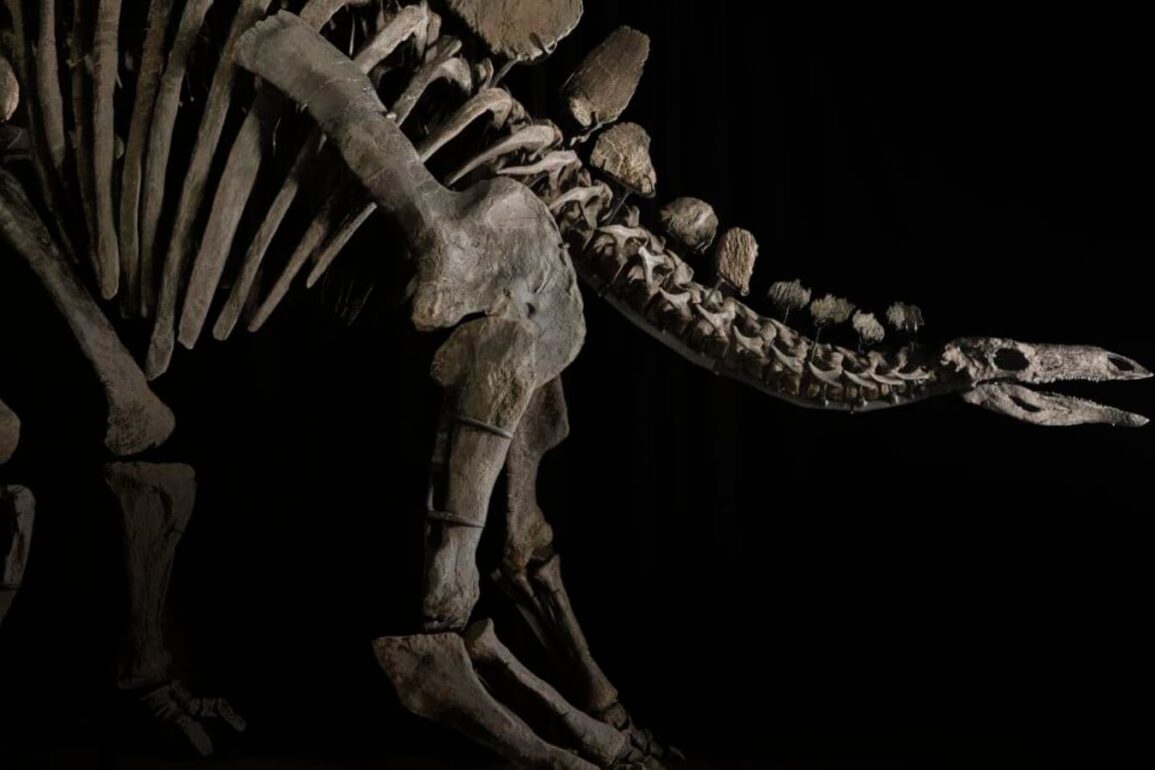
Sales were down last year at the world’s chief auction houses, as wary sellers held onto their prized trophies. But experts at Sotheby’s have found at least one reason to celebrate: Luxury goods, which include everything from dinosaur bones to jewelry to rare sneakers, held up better than expected last year and hint at a possible market turnaround.
Sotheby’s said Thursday its overall sales last year fell 23% to $6 billion. About $4.6 billion of that total represented auction sales, down 28% from 2023. Another $1.4 billion represented privately brokered art sales, up 17% last year. The privately held company doesn’t release earnings, but sales results capped a tough year for the house, which sought to right its finances by laying off some staff last year.
Rival Christie’s, also privately held, said it sold $5.7 billion in art last year, down 6% from the year before. Its total included $4.2 billion in auction sales, down 16% from 2023, and $1.5 billion in private sales, up 41%.
The world’s chief auction houses historically rely on museum-worthy paintings and sculptures to be the mainstay of their offerings, and the priciest pieces sold at Sotheby’s and Christie’s last year were still blue-chip paintings: A banana.
The emphasis on luxury also reflects an industry trying to figure out what younger buyers see as a worthy splurge. Houses are realizing it may pay off to alter their sales mix now that collectors are willing to pay as much for a 1960 Ferrari 250 GT as they are for a David Hockney landscape.
“Luxury is a beacon for new and younger audiences,” said Josh Pullan, global head of luxury at Sotheby’s, a division whose sales he said have tripled since it was formally organized in 2019. Last year, nearly a third of Sotheby’s bidders were in their 20s and 30s, Pullan added, so the house is drawing them in using luxury goods—and then enticing them to try bidding for pricier art in traditional categories.
This week, Pullan’s team converted a portion of the sleek new Sotheby’s lobby in Paris into a miniature basketball court to showcase sports memorabilia the house is selling in step with the NBA Paris Games.
Charles Stewart, chief executive of Sotheby’s, credited luxury categories with weathering the slowdown better than its fine-art divisions, even if the latter represented a larger slice of its overall total. Sotheby’s sold $2.2 billion in luxury goods last year, down 4% from 2023, while it sold $3.8 billion in fine art, down 31% from the year before, he said.
RM Sotheby’s sold a Ferrari SWB California Spider by Scaglietti for $17 million last summer.
But Stewart said the supply pipeline is starting to loosen up across the board, as the company has lined up about $800 million worth of art to sell during its first quarter of 2025, typically a quieter season in the art market.
The resilience of these quirkier offerings has encouraged Christie’s to get into the collectible car arena as well. It only sold $678 million in luxury goods last year—far less than its rival—but the house has set out to even the scales in part by buying collectible car seller Gooding & Co. The entity, now renamed Gooding Christie’s, will kick off with an exhibition of cars at Salon Rétromobile in Paris in February.
Looking ahead, expect both houses to go wherever they can to persuade collectors to resume their shopping sprees. Both houses recently got licenses to sell art in Saudi Arabia and are now planning sales in the region, with Sotheby’s holding its first major auction there on Feb. 8. The sale includes everything from paintings by Fernando Botero to a jersey worn by soccer star Cristiano Ronaldo and is estimated to top $16 million.
Watch for both houses to also lean heavily on U.S. collectors—and their tastes—to spur any market turnaround. Sotheby’s said U.S. buyers accounted for 63% of its global sales last year, or $3.7 billion, whereas Europeans took home about $1.6 billion. Asian buyers only won about 10% of its offerings, or $595 million.
Write to Kelly Crow at kelly.crow@wsj.com
This post was originally published on this site be sure to check out more of their content






